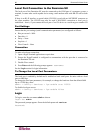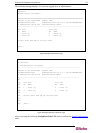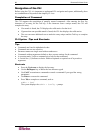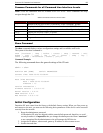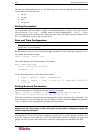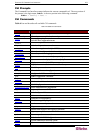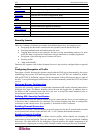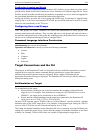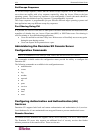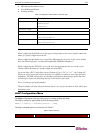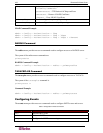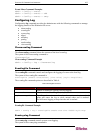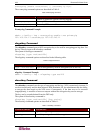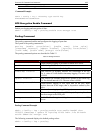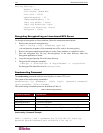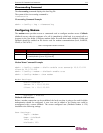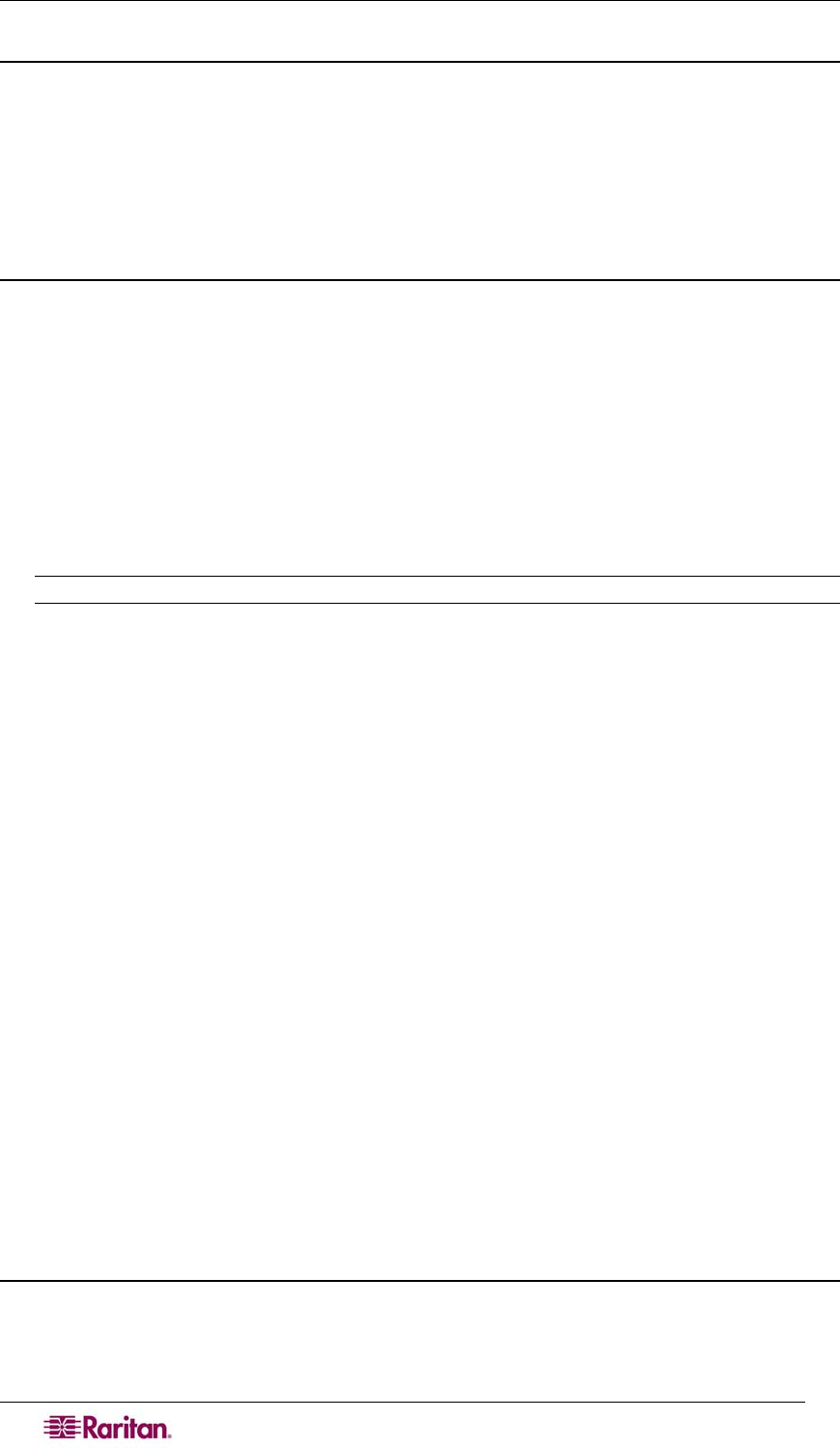
104 DOMINION SX USER GUIDE
Set Escape Sequence
To set the Escape sequence, ensure that the default Escape sequence set on the Dominion SX
server does not conflict with a key sequence required by either the Access Client or the host
operating system. The Escape key sequence is user-configurable. Console sub-mode should be
displayed when the default escape key sequence ^] (programmable) is pressed.
The escape sequence is programmable per port because different target operating systems and
host applications may trap different escape key sequences.
Port Sharing Using CLI
It is possible for Access Client users to share ports with other authenticated and authorized users,
regardless of whether they are Access Client users(RSC) or SSH/Telnet users. Port sharing is
used for training or for troubleshooting applications.
• Users are notified in real time if they have Write access or Read Only access at any point
during the port-sharing session.
• Users can request Write permission to a port.
Administering the Dominion SX Console Server
Configuration Commands
Note: CLI commands are the same for SSH, Telnet, and Local Port access sessions.
The commands available under the configuration menu provide the ability to configure the
Dominion SX.
The following commands are available in the configuration menu:
• authentication
• events
• log
• modem
• network
• nfs
• ports
• services
• snmp
• time
• users
Configuring Authorization and Authentication (AA)
Services
Dominion SX supports both local and remote authentication and authorization (AA) services.
Local databases for AA are maintained in an encrypted format to prevent unauthorized access.
Remote Services
For remote services, Dominion SX supports LDAP, Active Directory, TACACS+ and Kerberos.
The Dominion SX server also supports an additional level of security services that further
enhance protection of the console server. These services are:



